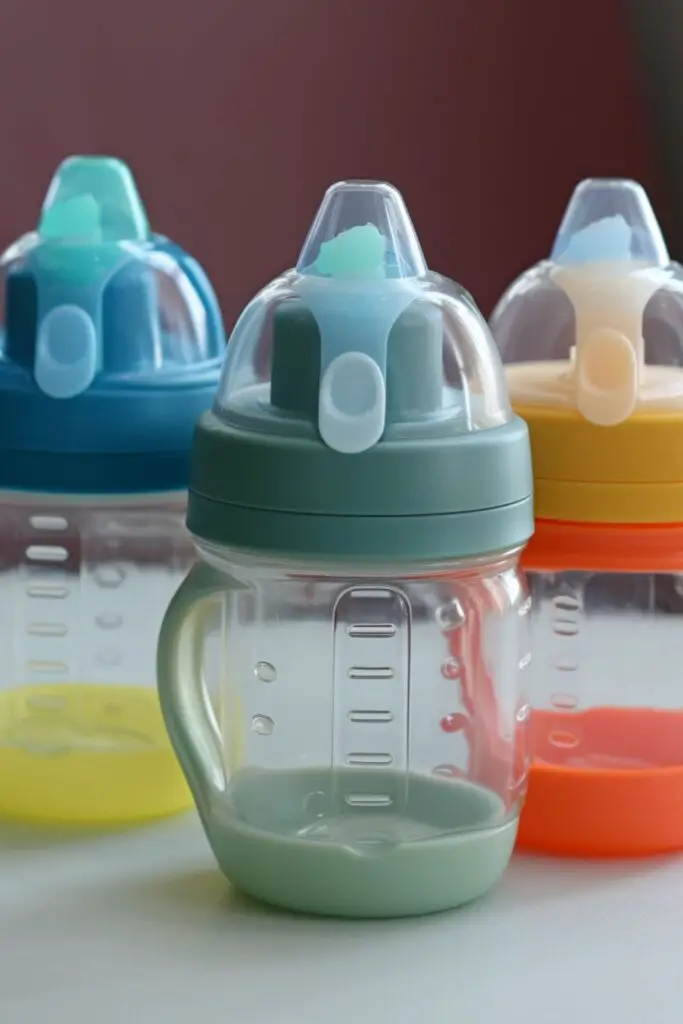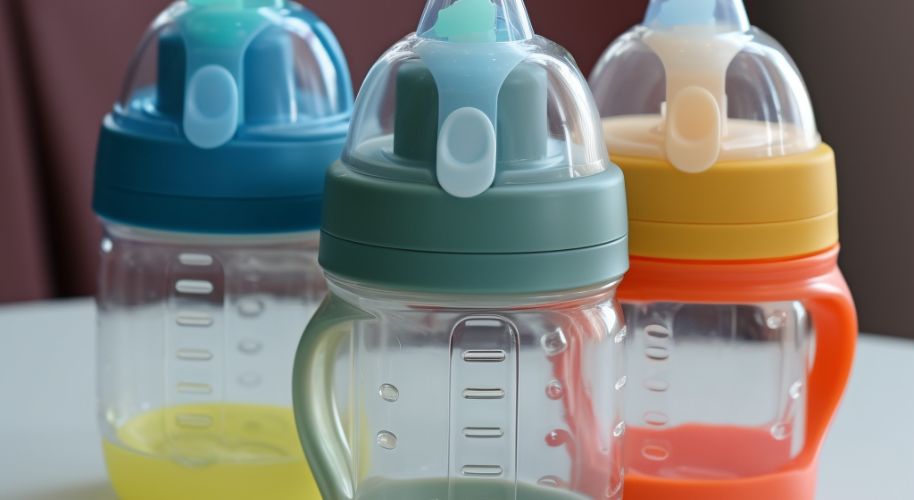Last Updated on June 5, 2025
The phenomenon of ‘bottle nipple collapse’ can bewilder many new parents and caregivers. It’s a common issue when the nipple of your baby’s feeding bottle unexpectedly flattens or caves in during feeding sessions.
This can create frustration for you and your little one, who might be trying hard to feed—the causes behind this problem range from incorrect nipple sizes to improper airflow within the bottle. Yet, despite its prevalence, it’s an issue that has straightforward solutions.
In this blog, we’ll delve into the various reasons behind bottle nipple collapse and provide practical fixes. We aim to ensure that your baby’s feeding time is a smooth, enjoyable experience.
So, if you’re grappling with a collapsing bottle nipple, keep reading. We’re here to help you understand and overcome this challenge.

Why does the bottle nipple collapse?
Bottle nipple collapse is a common issue faced by many parents. The bottle nipple can collapse for several reasons:
Vacuum Creation
When a baby sucks on a bottle, it creates a vacuum inside. If the bottle’s venting system isn’t functioning properly or there’s no proper ventilation, the vacuum created can cause the nipple to collapse.
Incorrect Nipple Size or Type
If the nipple is too small for the baby’s mouth or the hole in the nipple is too small for the formula’s thickness, it can lead to the nipple collapsing under the pressure of the baby’s sucking.
Baby’s Feeding Style
Each baby has a unique feeding style. Some babies suck very hard or chew on the nipple, which can cause it to invert or collapse.
Wear and Tear
Over time, the regular use, washing, and sterilizing of the bottle nipples can cause them to wear down and become more susceptible to collapsing.
To prevent this issue, it’s important to ensure you’re using the right size and type of nipple for your baby’s age and feeding style, regularly checking the bottle’s venting system, and replacing the nipples when they show signs of wear and tear.
Nipple Collapse Symptoms
Nipple collapse, in the context of baby bottle feeding, can manifest in several ways:
- Frustration or Discomfort
- Longer Feeding Times
- Squashed Nipple
- Gulping, Choking, Hard Swallowing, Coughing, Increased Drooling
- Refusing to Eat
In adult health, nipple collapse often refers to inverted or retracted nipples. This can be a symptom of various conditions, including benign breast disease, Paget’s disease of the breast, or breast cancer456. Symptoms can include nipple retraction, skin changes, redness, tenderness, or nipple discharge.
You Might also Like These Resources!
- Leaving a Bottle Warmer On Overnight: Is It Safe?
- Simplifying Night Time Bottle Feeding: Tips and Tricks
- Preventing Clicking Sounds During Bottle Feeding
How to Fix Bottle Nipple Collapse?

Fixing a bottle nipple collapse can be done in several ways based on the causes:
Re-opening the Slit: If the nipple has a built-in valve that’s not functioning properly, you can try to re-open the slit at the tip of the valve by gently manipulating it between your finger and thumb.
Checking the Components: Ensure the air valve is open and nothing obstructs it. If the nipple continues to collapse, there might be an issue with the bottle’s components.
Adjusting the Nipple and Ring Cap: When screwing the nipple and ring cap onto the bottle, ensure not to over-tighten it. It should be screwed on just enough so the bottle does not leak.
Pulling the Nipple Sideways: Another technique is to gently pull the nipple to the side with your fingers, ensuring the valve is on top while you are doing this.
Correct Sizing: One of the main reasons why bottle nipples may collapse is due to incorrect sizing. Use the right size for your baby’s age and feeding style.
Regularly inspecting and maintaining the bottle’s components can help prevent nipple collapse. If the problem persists, consider consulting a pediatrician or a lactation expert.
What can be done to prevent bottle nipples from collapsing?
To prevent bottle nipples from collapsing, you can follow these steps:
Correct Nipple Size
One of the main reasons why bottle nipples may collapse is due to incorrect sizing. If the size of the nipple is too small for your baby’s mouth or the hole in the nipple is too small for the formula’s thickness, it can lead to the nipple collapsing under the pressure of your baby’s sucking.
Ensure Proper Ventilation
Overtightening the bottle can prevent venting and lead to nipple collapse. Make sure that there are no obstructions inside the nipple, vent cap, or straw by inspecting the bottle’s components and venting system.
Use a Bottle with Anti-Colic Features
Some bottles come with anti-colic features, including a specialized venting system to prevent vacuum creation and nipple collapse.
Adjust the Position of the Bottle
If the bottle is held at a certain angle, it could cause the nipple to collapse. Try adjusting the position of the bottle or pulling the nipple sideways.
Regular Maintenance
Regular inspection and cleaning of the bottle’s components can help identify potential issues early and prevent nipple collapse.
Need to change bottle nipple size?
There is no specific “right” time to change your baby’s nipple size. It largely depends on your baby’s feeding behavior and cues. Here are some signs that it might be time to change the nipple size:
- Feeding Takes Too Long
- Baby is Frustrated During Feeding
- Frequent Sucking without Swallowing
- Age Bracket
Every baby is unique, and these are just guidelines. Always observe your baby’s behavior during feedings and consult a pediatrician if you have any concerns about feeding issues.
FAQs
Can bottle nipple collapse cause discomfort for my baby?
Yes, a collapsed bottle nipple can cause frustration and discomfort for your baby during feedings due to interrupted milk flow.
Will changing the nipple size prevent nipple collapse?
Changing to the appropriate nipple size based on your baby’s age and the formula’s thickness can help prevent nipple collapse.
Can regular maintenance prevent nipple collapse?
Regularly inspecting and cleaning the bottle’s components can help prevent nipple collapse.
Conclusion
Bottle nipple collapse can cause discomfort and frustration for the baby and the caregiver. It’s often caused by improper ventilation, incorrect nipple size, or holding the bottle at a particular angle.
However, it can be prevented by using the correct nipple size, ensuring proper ventilation, and regularly maintaining the bottle’s components.
If persistent nipple collapse occurs, consider consulting with a pediatrician or lactation expert. Understanding and addressing this issue can significantly improve the feeding experience for your baby.
You Might Also Like These Latest Content!
- Raising the Crib Mattress for Comfort and Safety
- Storing Your Baby Bathtub: Practical Tips
- Folding Up Your Britax Stroller: Easy Steps

Amy A. Vincent is a Certified Pediatric Sleep Consultant and a mother of three beautiful children. She helps parents transition their babies from swing sleep to safe, independent sleep. She is passionate about helping parents teach their children the skills needed to become good sleepers and aims to make the process as easy and stress-free as possible. Read more
